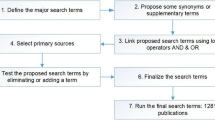Abstract
The present study provides evidence on the potential benefits of using gamification tools in university education, particularly for reviewing lessons. The main purpose is to explore the impact on student motivation and academic performance. The study was conducted on an engineering subject at the University of Cadiz (Spain), with 2 of 3 groups undergoing a gamified review process using the tool Nearpod. The results of the surveys performed by 47 students revealed that 98% of them preferred using Nearpod to traditional methods, and 91% stated that it increased their motivation in the subject. Also, the exam results at the end of the semester showed that the students in the gamified groups had higher passing rates as well as average scores compared to the non-gamified group, which suggests improved knowledge retention and academic performance.
Access this chapter
Tax calculation will be finalised at checkout
Purchases are for personal use only
Similar content being viewed by others
References
Nikou, S.A., Economides, A.A.: Mobile-based assessment: a literature review of publications in major referred journals from 2009 to 2018. Comput. Educ. 125, 101–119 (2018). https://doi.org/10.1016/j.compedu.2018.06.006
Subhash, S., Cudney, E.A.: Gamified learning in higher education: a systematic review of the literature. Comput. Human Behav. 87(February), 192–206 (2018). https://doi.org/10.1016/j.chb.2018.05.028
McClean, S., Crowe, W.: Making room for interactivity: using the cloud-based audience response system Nearpod to enhance engagement in lectures. FEMS Microbiol. Lett. 364(6), 1–7 (2017). https://doi.org/10.1093/femsle/fnx052
Sumanasekera, W., Turner, C., Ly, K., Hoang, P., Jent, T., Sumanasekera, T.: Evaluation of multiple active learning strategies in a pharmacology course. Curr. Pharm. Teach. Learn. 12(1), 88–94 (2020). https://doi.org/10.1016/j.cptl.2019.10.016
Szczygiel, L., Iannella, A., Simi, M.: Increasing engagement and student participation in Higher Education: insights from the University of Pisa during COVID-19. Int. Conf. High. Educ. Adv. 2022, 239–246 (2022). https://doi.org/10.4995/HEAd22.2022.14612
Tornwall, J., Lu, L., Xie, K.: Frequency of participation in student response system activities as a predictor of final grade: an observational study. Nurse Educ. Today 87, 104342 (2020). https://doi.org/10.1016/j.nedt.2020.104342
Wang, A.I.: The wear out effect of a game-based student response system. Comput. Educ. 82, 217–227 (2015). https://doi.org/10.1016/j.compedu.2014.11.004
Sheng, R., Goldie, C.L., Pulling, C., Luctkar-Flude, M.: Evaluating student perceptions of a multi-platform classroom response system in undergraduate nursing. Nurse Educ. Today 78(February), 25–31 (2019). https://doi.org/10.1016/j.nedt.2019.03.008
Zainuddin, Z., Chu, S.K.W., Shujahat, M., Perera, C.J.: The impact of gamification on learning and instruction: a systematic review of empirical evidence. Educ. Res. Rev. 30, 100326 (2020). https://doi.org/10.1016/j.edurev.2020.100326
Wang, A.I., Tahir, R.: The effect of using Kahoot! for learning – A literature review. Comput. Educ. 149, 103818 (2020). https://doi.org/10.1016/j.compedu.2020.103818
Orhan Göksün, D., Gürsoy, G.: Comparing success and engagement in gamified learning experiences via Kahoot and Quizizz. Comput. Educ. 135, 15–29 (2019). https://doi.org/10.1016/j.compedu.2019.02.015
Dell, K.A., Chudow, M.B.: A web-based review game as a measure of overall course knowledge in pharmacotherapeutics. Curr. Pharm. Teach. Learn. 11(8), 838–842 (2019). https://doi.org/10.1016/j.cptl.2019.04.012
Shehata, N., Mitry, C., Shawki, M., El-Helaly, M.: Incorporating Nearpod in undergraduate financial accounting classes in Egypt. Account. Educ. 29(2), 137–152 (2020). https://doi.org/10.1080/09639284.2019.1704806
Author information
Authors and Affiliations
Corresponding author
Editor information
Editors and Affiliations
Rights and permissions
Copyright information
© 2023 The Author(s), under exclusive license to Springer Nature Switzerland AG
About this paper
Cite this paper
Romero Rodríguez, L. (2023). Using Nearpod for Reviewing Lessons to Increase Motivation and Academic Performance: A Case Study with Engineering Students. In: Milrad, M., et al. Methodologies and Intelligent Systems for Technology Enhanced Learning, 13th International Conference. MIS4TEL 2023. Lecture Notes in Networks and Systems, vol 764. Springer, Cham. https://doi.org/10.1007/978-3-031-41226-4_21
Download citation
DOI: https://doi.org/10.1007/978-3-031-41226-4_21
Published:
Publisher Name: Springer, Cham
Print ISBN: 978-3-031-41225-7
Online ISBN: 978-3-031-41226-4
eBook Packages: Intelligent Technologies and RoboticsIntelligent Technologies and Robotics (R0)




